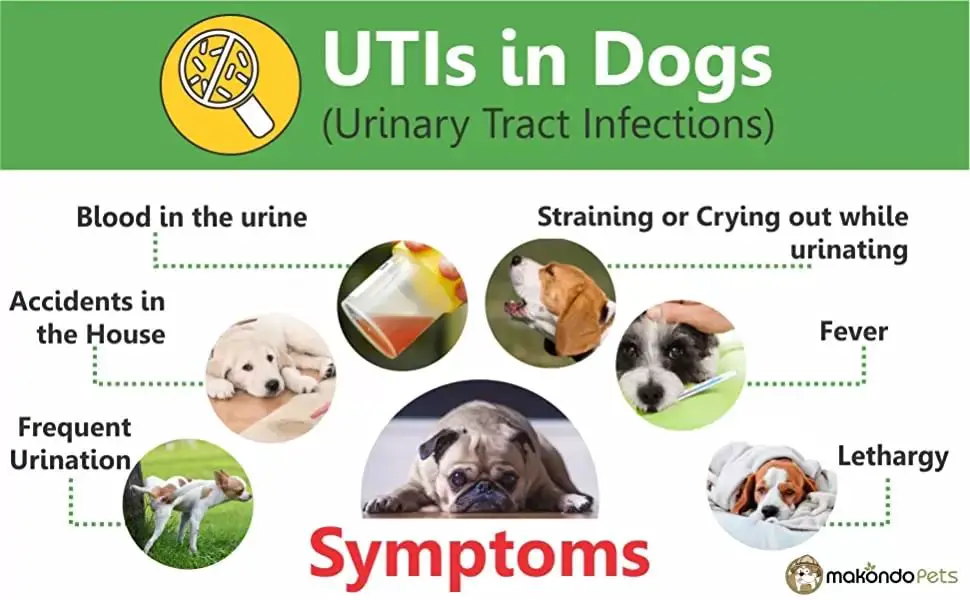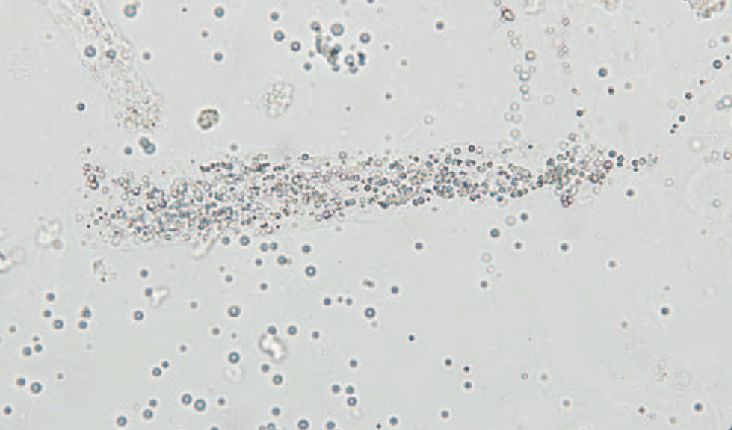Introduction
A dog’s urine pH is an important indicator of their overall health. Urine pH refers to how acidic or alkaline (basic) a dog’s urine is, ranging from very acidic (pH of 5) to very alkaline (pH of 9). Normal and healthy dog urine generally falls between pH 6 and 7.
It’s important for a dog’s urine pH to remain balanced. If the pH trends too high or too low, it can indicate an underlying problem such as a urinary tract infection, kidney stones, or metabolic conditions like diabetes. High urine pH specifically has been linked to struvite crystals and bladder infections in dogs.
Monitoring a dog’s urine pH over time and addressing any imbalances early on can help prevent more serious health issues down the line. Talk to your veterinarian if you notice your dog’s urine pH straying outside the normal range, as high or low pH urine should always be evaluated.
What Causes High pH Urine in Dogs
There are several potential causes of high pH urine in dogs:
Infection
Bacterial urinary tract infections (UTIs) can cause alkaline urine in dogs. Bacteria like E. coli and Staphylococcus produce urease, an enzyme that splits urea into ammonia. This causes the urine pH to rise. UTIs need to be treated with antibiotics prescribed by a veterinarian.

Diet
Some dog foods, especially those heavy in plant proteins, may cause urine pH to be too alkaline. Adding more meat protein to the diet can help balance the pH. Talk to your vet about an optimal diet for your dog.
Medications
Certain medications like glucocorticoids and antacids can increase urine pH and make it more alkaline. If medication is the suspected cause, talk to your vet about alternatives or dosage adjustments.
Metabolic Conditions
Some health conditions like kidney disease, diabetes, and hyperadrenocorticism can affect urine pH and cause alkaline urine. Getting the underlying condition diagnosed and treated is key.
Signs and Symptoms
Some of the most common signs and symptoms of high pH in dog urine include:
Frequent Urination: Dogs with high pH urine will often need to urinate more frequently. The alkaline urine irritates the bladder, causing the dog to feel like they need to go more often. You may notice your dog asking to go outside or having accidents in the house more than usual.
Discomfort: High pH urine can cause pain and discomfort when urinating. Your dog may cry or whimper when peeing, strain to urinate, or take a long time trying to fully empty their bladder. They may avoid urinating for as long as possible due to the discomfort.
Blood in Urine: The irritation to the bladder caused by alkaline urine can lead to minor bleeding. You may notice pink or reddish color in your dog’s urine. There may even be small amounts of blood clots or flecks visible in the urine.
In addition to these main symptoms, dogs with high urine pH may also exhibit general lethargy, loss of appetite, vomiting, and increased thirst. Pay attention for any signs of trouble urinating or changes in urinary patterns in your dog.
Diagnosis
If a urinary tract infection or other condition is suspected, the vet will perform diagnostic tests to determine the cause of high urine pH in dogs. The main diagnostic tests include:

Urinalysis
A urinalysis is one of the first tests vets will conduct. A urine sample is collected and then evaluated for its chemical composition as well as the presence of crystals, bacterial infections, or other abnormalities. The pH of the urine will also be tested with urinalysis.
Urine Culture
If a UTI is suspected, a urine culture may be ordered. This test involves incubating a urine sample in a laboratory to allow any bacteria present to multiply. The type of bacteria can then be identified to select the most effective antibiotic for treatment.
Imaging
Imaging tests like x-rays, ultrasounds, or CT scans may be used to evaluate the urinary tract. These can help identify stones, tumors, anatomical defects, or other issues that may be contributing to high urinary pH levels.
Treatment
There are several treatment options available for dogs with high urine pH:
Antibiotics
Antibiotics may be prescribed to treat or prevent urinary tract infections that can result from alkaline urine. Some common antibiotics used include amoxicillin, cephalexin, trimethoprim-sulfamethoxazole, and enrofloxacin.
Diet Changes
Making dietary changes is often the first step in lowering urine pH. This may involve switching to a prescription urinary or metabolic diet formulated to promote more acidic urine. Avoiding foods high in plant proteins, carbohydrates, and alkali salts may also help.
Medications to Acidify Urine
Certain medications can help acidify the urine and bring the pH into a healthier range. These include Vitamin C, DL-methionine, ammonium chloride, and potassium citrate. Your vet will prescribe the appropriate medication based on your dog’s specific needs.
Dietary Changes
Making some adjustments to your dog’s diet can help lower the pH of its urine. Here are some tips:
Feed acidic foods – Some foods create more acidic urine, which can help cancel out the alkalinity. Good options include meat, eggs, tofu, beans, brown rice, oats, potatoes, pumpkin, apples, cranberries, blueberries, yogurt, cottage cheese.
Increase moisture – Getting more water into your dog’s diet can help dilute the urine and reduce pH levels. Make sure fresh water is always available. Consider switching to wet food or adding water to kibble.
It’s best to make dietary changes gradually and monitor your dog’s reaction. Work with your vet to determine the ideal acidifying diet for your pup.
Lifestyle Changes
Making some simple lifestyle changes can help manage your dog’s high urine pH. Here are some tips:

Increased Access to Water
Providing your dog with constant access to fresh, clean water can help dilute the urine and reduce pH levels. Make sure your dog has a large bowl of water that is refilled regularly throughout the day. Allow your dog to drink as much as needed.
More Frequent Urination Breaks
Take your dog outside to urinate more often, every 3-4 hours if possible. Holding in urine allows chemical and mineral concentrates to build up, increasing pH. Giving more opportunities to empty the bladder can help flush out the urine and lower pH levels.
Try establishing a predictable potty schedule and stick to it. Take your dog to the same spot in the yard each time to encourage regular urination. Patience and positive reinforcement can help make potty training easier.
Medications
Certain medications can help correct high urine pH in dogs. Some commonly prescribed medications include:

Methionine
Methionine is an amino acid supplement that can make the urine more acidic. It converts to ammonia in the body, helping to lower urine pH. The typical dosage for dogs is 125-500 mg per 10 pounds of body weight daily.
Ammonium chloride
Ammonium chloride is an over-the-counter supplement that reduces urine pH. It provides an ammonium ion that gets eliminated from the body via urine. The usual dosage is 200-400 mg per 10 pounds of body weight daily.
Vitamin C
Vitamin C (ascorbic acid) is an acidifying agent that can make the urine more acidic. Give dogs 500-1,000 mg per day, depending on their size. Large dogs may require higher doses.
Home Remedies
There are some natural home remedies that may help manage high pH levels in your dog’s urine. However, you should check with your veterinarian before giving your dog any new supplements or making major dietary changes.
Some potential home remedies include:
Apple Cider Vinegar
Apple cider vinegar is acidic and may help rebalance your dog’s urinary pH. Add 1 teaspoon to 1 tablespoon of organic, unfiltered apple cider vinegar to your dog’s water bowl each day. Start with a small amount and gradually increase to make sure your dog will drink the water-vinegar mixture.
Cranberry Extract
Cranberry extract contains antioxidants that may help reduce urine pH levels. Give your dog cranberry extract capsules or liquid following the dosage recommendations on the product label. Check with your vet first, as cranberry may interact with some medications.
When using home remedies, monitor your dog closely for any changes or side effects. And be sure to follow up with your veterinarian to check if the remedies are helping lower your dog’s urinary pH.
When to See a Vet

If your dog has recurrent or persistent high pH urine, it’s important to see your veterinarian. Highly alkaline urine can lead to the formation of crystals and stones in the urinary tract, which can cause irritation, inflammation, and even blockages. Left untreated, these conditions can become very dangerous.
Some signs that warrant an urgent vet visit include:
- Recurrent UTIs
- Straining or discomfort when urinating
- Frequent urination
- Blood in the urine
- Crying out while urinating
- Excessive licking of genital area
In addition to high urine pH, other concerning symptoms like lethargy, vomiting, diarrhea or loss of appetite should prompt a vet visit. Your vet can run tests like a urinalysis and urine culture to check for infection, crystals and other abnormalities. They may prescribe medications or recommend dietary changes to help restore normal urine pH.
Don’t delay if your dog is showing signs of urinary trouble. Catching issues early is key to effective treatment and preventing complications down the road. It’s always better to be safe than sorry when it comes to your dog’s health.
